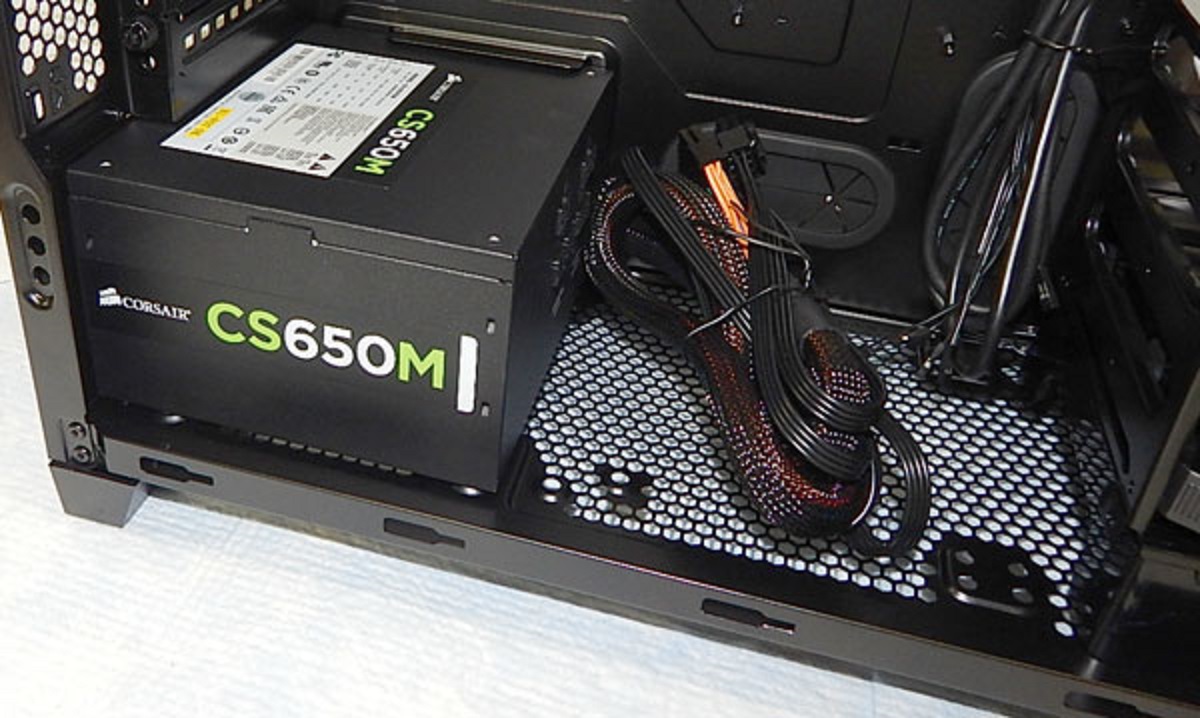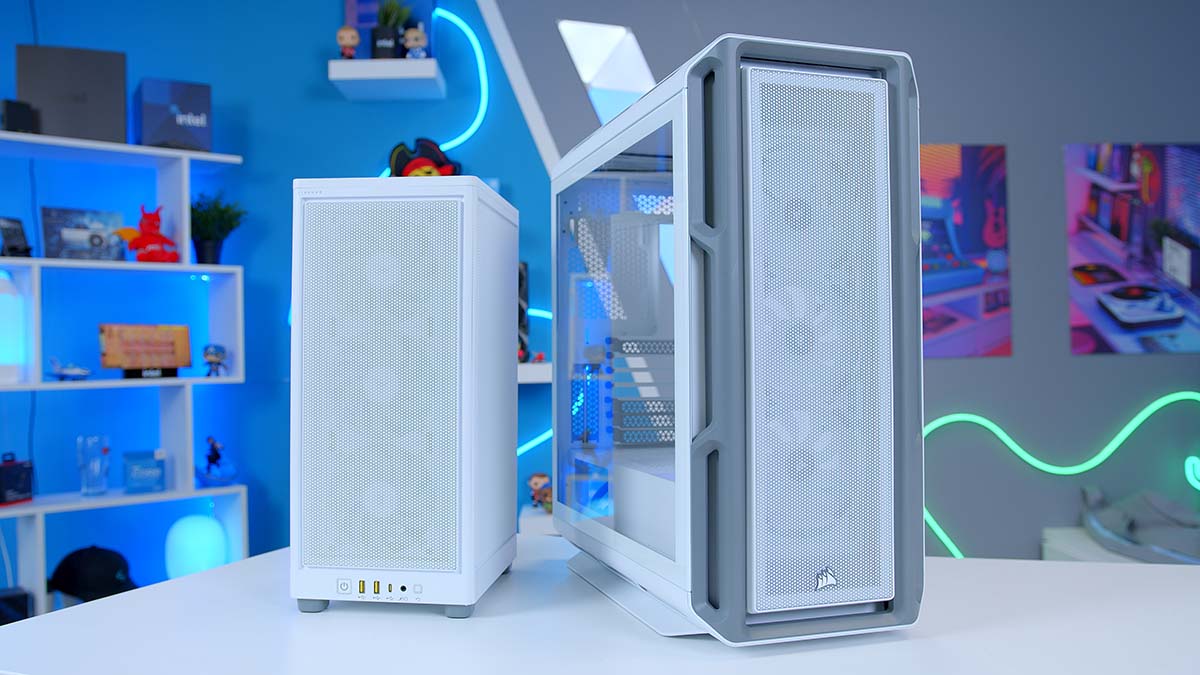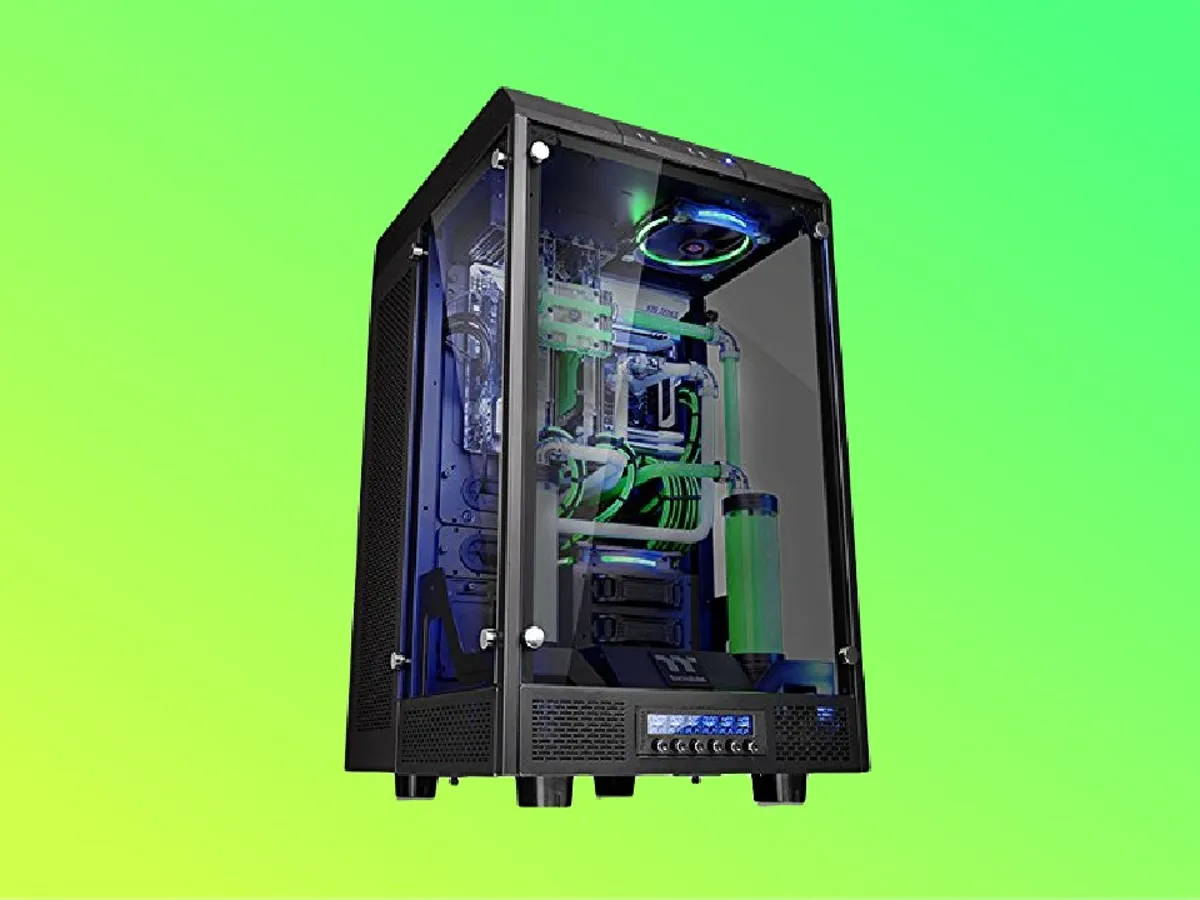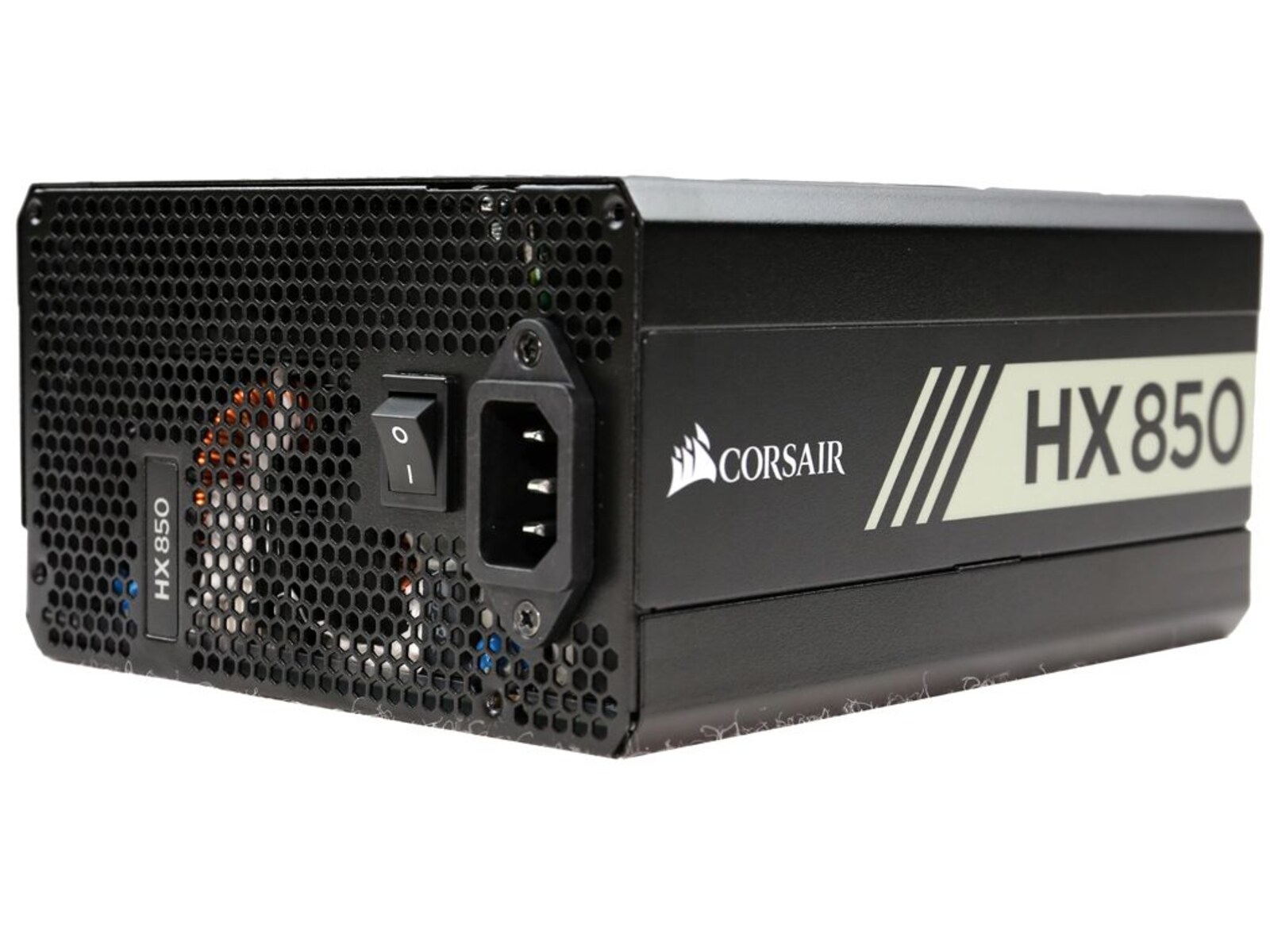Overview of Corsair Obsidian Case
The Corsair Obsidian case is renowned for its sleek design, durability, and exceptional build quality. It is a popular choice among PC enthusiasts and gamers looking to create a powerful and visually appealing system. The Obsidian series from Corsair offers a range of options, each designed to accommodate different needs and preferences.
One of the standout features of the Corsair Obsidian case is its premium construction. It is built with high-quality materials, including sturdy steel and brushed aluminum, giving it a robust feel and a professional look. The attention to detail in the design makes it a visually striking piece of hardware that adds a touch of elegance to any setup.
Another key feature of the Corsair Obsidian case is its exceptional cooling capabilities. It is designed with optimized airflow in mind, utilizing strategically placed vents and fans to ensure efficient heat dissipation. This helps to keep your components cool even during demanding tasks or extended gaming sessions. Additionally, the case can accommodate various cooling configurations, including liquid cooling solutions for those who crave ultimate performance.
Furthermore, the Corsair Obsidian case offers ample space and flexibility for component installation. It comes with multiple drive bays, supporting both SSDs and traditional HDDs, allowing you to store and access your data effortlessly. The case also features a modular design, enabling easy cable management and customization. This ensures a clean and organized interior, reducing clutter and enhancing overall system aesthetics.
Lastly, the Corsair Obsidian case takes user convenience into consideration. It boasts tool-free installation mechanisms, making it a breeze to assemble or upgrade your system. The easily removable side panels provide quick access to the interior, simplifying maintenance and component swaps. Additionally, the case includes numerous USB ports, audio jacks, and even integrated fan control options, providing easy access to essential peripherals.
In summary, the Corsair Obsidian case is an excellent choice for PC builders seeking both style and functionality. Its premium construction, efficient cooling, spacious interior, and user-friendly features make it a top contender in the world of computer cases.
Understanding PSU Compatibility
When choosing a power supply unit (PSU) for your Corsair Obsidian case, it is crucial to ensure compatibility to ensure optimal performance and safety. The PSU is responsible for providing the necessary power to all the components of your system, including the motherboard, graphics card, and storage devices.
One of the primary considerations when determining PSU compatibility is the form factor. The Corsair Obsidian case typically supports standard ATX power supplies, but it’s essential to consult the case specifications or manual to confirm the specific form factor required. Additionally, some Corsair Obsidian cases may also support smaller form factors such as SFX or TFX, providing flexibility for different build requirements.
Power output is another critical factor to consider when selecting a PSU. It is crucial to ensure that the PSU’s wattage is sufficient to power all the components in your system comfortably. It is generally recommended to choose a PSU with a wattage rating slightly higher than the estimated power requirements of your system. This ensures stability and headroom for future upgrades without straining the PSU.
Modular or non-modular PSU configurations should also be taken into account when considering compatibility. A modular PSU allows you to connect only the necessary cables, reducing clutter and improving airflow within your case. This can enhance the overall aesthetics and manageability of your build. Non-modular PSUs, on the other hand, come with fixed cables, which may be less flexible for cable management but often come at a lower price point.
Lastly, it is essential to consider the efficiency and certifications of the PSU. The efficiency rating is typically denoted by the 80 Plus certification, with higher levels indicating better efficiency at different loads. A more efficient PSU not only reduces energy consumption but also generates less heat and operates more quietly. Look for PSUs with certifications such as 80 Plus Bronze, Silver, Gold, or even Platinum for optimal efficiency.
In summary, understanding PSU compatibility is crucial when selecting a power supply for your Corsair Obsidian case. Consider factors such as form factor, power output, modular or non-modular configurations, and efficiency certifications to ensure a suitable and reliable power supply that meets the needs of your system.
Factors to Consider When Choosing a PSU
Choosing the right power supply unit (PSU) for your Corsair Obsidian case involves considering several factors to ensure optimal performance and compatibility. The PSU is a critical component that provides power to your entire system, so selecting the right one is essential for a stable and reliable computer build.
1. Power Output: The wattage rating of the PSU is a key factor to consider. It should provide sufficient power to run all your components comfortably, including the CPU, graphics card, and other peripherals. It’s generally recommended to select a PSU with a slightly higher wattage than your estimated power requirements to allow for future upgrades.
2. Efficiency: Look for PSUs with higher efficiency ratings, denoted by the 80 Plus certification. Higher levels, such as 80 Plus Bronze, Silver, Gold, or Platinum, indicate better energy efficiency at different loads. An efficient PSU not only reduces power consumption but also generates less heat and operates more quietly.
3. Modularity: Consider whether you prefer a modular or non-modular PSU. A modular design allows you to plug in only the necessary cables, reducing cable clutter inside your case and improving airflow. Non-modular PSUs come with fixed cables, which may be less flexible for cable management but are often more cost-effective.
4. Cable Length: Ensure that the PSU’s cables are long enough to reach all the components in your system, especially in larger cases like the Corsair Obsidian. Check the specifications or consult the manufacturer to ensure compatibility with your case’s layout.
5. Connectors and Compatibility: Verify that the PSU has the necessary connectors for your components, including the motherboard, graphics card, and storage devices. Pay attention to the number and type of PCIe connectors required for high-performance graphics cards.
6. Quality and Reliability: Invest in a reputable brand known for producing high-quality PSUs. Look for certifications like 80 Plus, as well as safety features such as over-voltage, over-current, and short-circuit protection. Reviews and ratings from trusted sources can help you gauge the reliability of a PSU.
7. Noise Level: Consider the noise level of the PSU, especially if you prioritize a quiet computing experience. PSUs with larger, quieter fans or fanless designs tend to produce less noise during operation.
8. Warranty and Customer Support: Check the length and terms of the warranty provided by the PSU manufacturer. Good customer support and a longer warranty period can provide peace of mind and assistance in case of any issues or defects.
By considering these factors when choosing a PSU for your Corsair Obsidian case, you can ensure a reliable power supply that meets the needs of your system and provides a stable foundation for your computer build.
Recommended PSU Sizes for Corsair Obsidian Case
When selecting a power supply unit (PSU) for your Corsair Obsidian case, it is important to choose a size that is compatible and suitable for your system’s power requirements. Corsair Obsidian cases typically support ATX-sized PSUs, but considerations should be made regarding the wattage and form factor to ensure optimal performance and fit.
The PSU wattage recommendation is influenced by the power requirements of your components, including the CPU, graphics card, storage devices, and other peripherals. It is crucial to choose a PSU with sufficient wattage to power your entire system, allowing for stable operation and avoiding potential issues caused by inadequate power delivery.
For a standard gaming or multimedia PC build with a single graphics card and a mid-range CPU, a 500 to 650-watt PSU is generally sufficient. This wattage range can handle the power demands of most components while allowing some headroom for future upgrades or additions.
If you are building a high-end gaming system with multiple graphics cards or an enthusiast workstation with power-hungry components, a higher wattage PSU, such as 750 to 1000 watts, may be more suitable. This ensures that your PSU can deliver ample power to handle the increased demands of these high-performance setups.
Form factor compatibility is another important consideration when choosing a PSU for your Corsair Obsidian case. Most Corsair Obsidian cases accommodate standard ATX-sized PSUs. However, it is essential to check the case specifications or manual to confirm the exact form factor the case supports. Some Corsair Obsidian cases may also have support for smaller form factors, such as SFX or TFX, providing flexibility for compact or specialized builds.
Furthermore, modular or non-modular PSU configurations can be considered based on personal preference and cable management needs. A modular PSU allows you to connect only the necessary cables, improving airflow and reducing cable clutter. This can be especially beneficial in a spacious case like the Corsair Obsidian, as it helps maintain a clean and organized interior. Non-modular PSUs come with fixed cables, which may be less flexible but are often more budget-friendly.
In summary, when selecting a PSU for your Corsair Obsidian case, it is recommended to consider the wattage requirements of your system, the form factor compatibility, and the modular or non-modular design based on your preferences. Choosing a PSU with the right size ensures that your system receives a stable and sufficient power supply for optimal performance.
Installation Tips and Considerations
Installing a power supply unit (PSU) in your Corsair Obsidian case requires careful consideration and attention to detail to ensure a successful and trouble-free installation. Here are some useful tips and considerations to keep in mind during the installation process:
1. Positioning: Before installing the PSU, determine the optimal positioning within the case. Most Corsair Obsidian cases have a dedicated PSU chamber at the bottom or top of the case. Choose the location that offers the best cable management and airflow for your specific case model.
2. Cable Routing: Proper cable management is crucial for optimal airflow and a tidy interior. Take the time to plan the routing of the PSU cables, ensuring they are neatly tucked away and do not obstruct any airflow paths. Utilize cable management features, such as Velcro straps or cable routing holes, to keep cables organized.
3. Modular Cables: If you have a modular PSU, connect only the necessary cables to reduce clutter. This not only improves airflow but also makes future upgrades or maintenance easier. Be sure to securely attach the cables to the PSU and components for reliable power delivery.
4. Mounting: Follow the manufacturer’s instructions for securing the PSU to the case. Typically, this involves aligning the PSU with the mounting holes in the case and using screws to secure it in place. Ensure a tight fit to prevent any movement or vibrations during operation.
5. Proper Ventilation: Check the PSU’s fan orientation and ensure proper ventilation. In most cases, the PSU fan should face downward, drawing in cool air from outside the case and expelling it out of the back. This helps to prevent hot air from the PSU affecting other components and aids in overall system cooling.
6. Power Supply Sizing: Choose a PSU size that fits comfortably in the PSU compartment of your Corsair Obsidian case. Ensure there is enough clearance between the PSU and other components, such as the motherboard or storage drives, to avoid any compatibility issues or interference.
7. Safety Precautions: Before starting the installation, ensure that your computer is turned off and unplugged from the power source. Take anti-static precautions by using an anti-static wristband or regularly grounding yourself to avoid static discharge, which can damage sensitive components.
8. Testing and Troubleshooting: After the installation, double-check all connections and ensure everything is secure. Before fully closing the case, perform a test boot to verify that the PSU is functioning correctly and providing power to all components. Pay attention to any warning signs, such as fan noises, abnormal vibrations, or an unresponsive system.
By following these installation tips and considerations, you can ensure a smooth and successful installation of your PSU in your Corsair Obsidian case. This will contribute to a well-organized and efficient system that provides reliable power delivery to all your components.
Common Questions and Troubleshooting
During the installation or operation of a power supply unit (PSU) in your Corsair Obsidian case, you may encounter some common questions or face troubleshooting situations. Here, we address a few of these common queries to help you resolve any issues:
1. Q: My computer does not power on after installing the PSU. What could be the issue?
A: Double-check all connections, including the PSU cables to the motherboard, CPU, and graphics card. Ensure they are securely seated. Verify that the power switch on the back of the PSU is in the on position and that the PSU is properly connected to a power source.
2. Q: My PSU fan is louder than expected. Is this normal?
A: PSU fans may vary in noise level depending on the model and brand. However, if the noise is unusually loud or accompanied by vibrations, it could indicate a problem with the fan or an issue with airflow. Ensure that the PSU fan is free from any obstructions and that proper ventilation is maintained within the case.
3. Q: Can I use a higher wattage PSU than recommended for my Corsair Obsidian case?
A: It is generally safe to use a higher wattage PSU than the recommended wattage as long as the physical dimensions and form factor are compatible with your case. However, using a significantly higher wattage PSU may result in higher energy consumption and cost, so it is advisable to choose a PSU that meets the power requirements of your system.
4. Q: Can I reuse an old PSU in my new Corsair Obsidian case?
A: Reusing an old PSU is possible, but it’s important to ensure compatibility with your new case and system requirements. Consider factors such as wattage, form factor, and efficiency. Older PSUs may lack certain features or certifications found in newer models. Additionally, aged PSUs may have decreased efficiency and reliability, so it’s recommended to assess whether a new PSU is necessary for optimal performance.
5. Q: Are all Corsair Obsidian cases compatible with any type of PSU?
A: Corsair Obsidian cases generally support standard ATX-sized PSUs but have specific requirements for form factors and dimensions. It is crucial to refer to the case specifications or manual to confirm the compatible PSU form factors and sizes. Some Corsair Obsidian cases may also offer support for smaller form factor PSUs, such as SFX or TFX.
6. Q: Should I leave the PSU fan facing up or down in my Corsair Obsidian case?
A: In most cases, it is recommended to have the PSU fan facing down, drawing in cool air from outside the case and expelling it out of the back. This ventilation setup helps maintain proper system cooling and prevents hot air from the PSU affecting other components. However, it is important to check the orientation recommended by the case manufacturer and adjust accordingly.
If you encounter any specific issues or have further questions regarding your Corsair Obsidian case or PSU installation, it is advisable to consult the user manual, contact Corsair customer support, or seek assistance from reputable online forums or communities. Remember to exercise caution and prioritize your safety when handling any electrical components during the troubleshooting process.

























